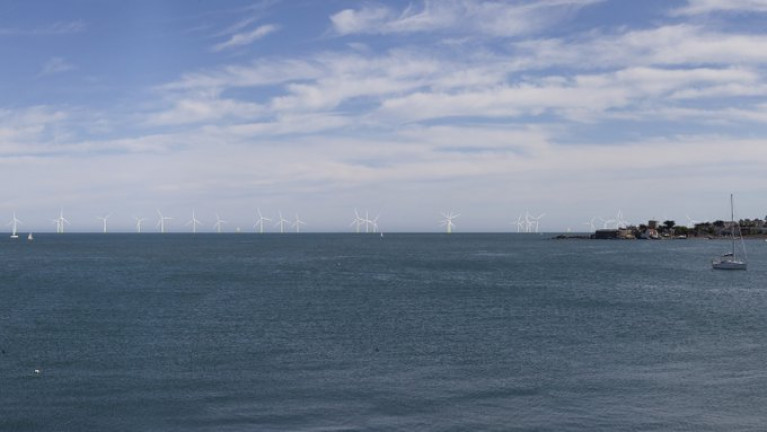Displaying items by tag: Supersized WindTurbines
'Supersize’ Wind Turbines Up to 60 Planned for Dublin Bay
Developers propose for outer Dublin Bay of a large offshore wind farm costing €1.5 billion, which would stretch south beyond Bray Head, have taken the unusual step of initiating public consultation in advance of completing a planning application.
German energy giant RWE and the Irish company Saorgus, plan to build the wind farm on the Kish and Bray Banks – known as Dublin Array – 10km off the east coast and close to the capital. It will be capable of generating enough electricity for up to 600,000 homes.
They have released photomontages indicating its visual impact. Large wind turbines are likely to be 310m in height when blade size is factored in, which will significantly change the seascape view from Dún Laoghaire almost as far as Greystones, Co Wicklow.
If approved, the view out to sea in the capital will become like some major European coastal cities where turbines are prominent, most notably in the Danish capital Copenhagen.
Dublin Array project director Peter Lefroy says the developers are conscious of visual impact, “especially as the Dublin region has never been exposed to a lot of wind energy in the past. This is why we have gone out early on consultation and are engaging with a wide range of stakeholders.”
For much more reading The Irish Times has the story including further details on the online consultation process which ends on Friday, 20th November.























